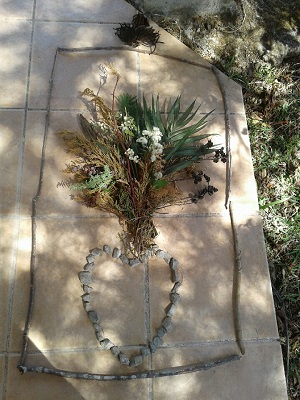Ecological Literacy in TESOL: Benefits for Professionals and Their Students
This blog is about the intersection of TESOL and ecoliteracy. Ecoliteracy has been defined as the experience and understanding of how nature sustains life and how to live accordingly. Promoting greater ecological awareness and ecological literacy allows our students and us, as teachers, to view nature and all life through a more inclusive, ecocentric lens, rather than one that is more human centered and anthropocentric. We come to understand that we are nature and part of the web of life, not separate from or superior to the rest of nature.
The Importance of Ecoliteracy in English Language Teaching
It’s been argued that the most consequential discovery in the history of science is that humanity is presently destroying our planet and our future with it (Steiner, 2017). The most pressing global issue we face is the survival of our and other species. As TESOL professionals, we are global, our students are global, and every part of the globe is experiencing life-threatening changes that come in the form of extreme weather events, including drought, fire, floods, hurricanes, and sea level rise.
In California, where I live, the fear of earthquakes has been eclipsed by the terror of quickly moving fire, which follows drought, which is then often followed by flooding and landslides. No person or place on the planet is immune to the changes we are experiencing. It is imperative that students at all levels learn and practice basic principles of ecological literacy. Many of the multilingual learners of English we see now, and certainly in our future classrooms, will have migrated as a result of climate chaos, and conflict and economic hardship are often accompanying realities for those forced to leave their homes, countries, and continents. Those least responsible for creating climate chaos are often the hardest hit by its devastation, and least able to mitigate or recover from the impacts.
The Benefits of Ecoliteracy in English Language Teaching
Did you know that spending time in nature can make you a happier, healthier person and professional? For students and teachers, aligning with nature promotes wellness, as spending time outdoors and in nature has many social, emotional, and physical benefits. Doctors in several countries are now prescribing time spent outdoors as an antidote to things like depression, anxiety, and loneliness. Multilingual learners of English are an extremely diverse demographic, but in cases where they are stressed or even traumatized, as I have seen throughout my career, being in nature and caring for other living things is calming and, sometimes, healing.
Learning in nature and about the Earth is also a great venue for English, as it often involves immediate, hands-on, and highly contextualized settings that can promote language learning. Ecoliteracy involves the language of science and many words that have English cognates, especially for students who speak a Latin-based language, which helps to facilitate language and content learning. Being in and learning about nature and about the Earth creates opportunities for language development, understanding of our global and species interdependence, and the connectedness of all systems and peoples.
Getting Started: Easy Ecoliteracy Activities
Many English language teachers are not equipped with knowledge of how to embed Earth education or ecological literacy into their practice, as it was not typically part of our core studies. Further, the most important implications of the information learned are often missing. For example, most of us are aware that the ice caps are melting, which results in sea level rise, but most do not know that having two permanent ice caps is what has kept the planet’s climate stable for millennia and allowed civilization to thrive. This is because these white ice sheets have been reflecting back over 90% of the heat from the sun, preventing the planet from overheating.
I recommend as background information for fellow professionals the short trailer to the film “Breaking Boundaries,” narrated by David Attenborough. However, I suggest beginning ecoliteracy teaching with something simple, such as one of these activities:
Go outside. Go outside during class — at whatever level you teach. Walk, observe, listen, sit. Optionally do a journal write. Then discuss what you saw, heard, thought, felt, and wrote.
Describe experiences in nature. Ask students to think about and possibly write and/or draw about their most positive or fondest memory of time spent outdoors/in nature (but keep in mind some students may have had traumatic experiences in nature, too, e.g., crossing rivers). Ask them to describe the physical setting as well as what else made it memorable: Who were they with? How did it make them feel? You might have students share out these experiences and possibly show their special places on a map or in images.
 Write a letter or poem. In many countries, 14 February is Valentine’s Day, when people worldwide celebrate love. You may want to share with your students several short excerpts from Thich Nhat Hanh’s Ten Love Letters to the Earth, or nature poems, and allow students to create their own!
Write a letter or poem. In many countries, 14 February is Valentine’s Day, when people worldwide celebrate love. You may want to share with your students several short excerpts from Thich Nhat Hanh’s Ten Love Letters to the Earth, or nature poems, and allow students to create their own!
Make nature-based art. To the right is a piece made in the cloud forest of Costa Rica, where I took future teachers to learn about ecoliteracy. But nature-based art can be made anywhere, by anyone, at any age! This too could be used to observe Valentine’s Day, where students create a tribute to a loved one or to the Earth. In a future blog, I will share more examples of nature-based art across age groups and explain how it can promote language learning.
Study words. As appropriate to your context, you can do word study and have as language objectives understanding both the concepts and morphology of ecocentric vs. anthropocentric, and, later, biophilic vs. biophobic — which I will discuss in a future blog.
In my next blog, I will share with you how I have come to this work and the personal and professional gifts that have accompanied it for me (and which I wish for you), as well as basic principles and practices of ecoliteracy, with suggestions for how these can be applied in our teaching as TESOL professionals.
Until my next blog, wishing you a month of love and time spent outdoors!


